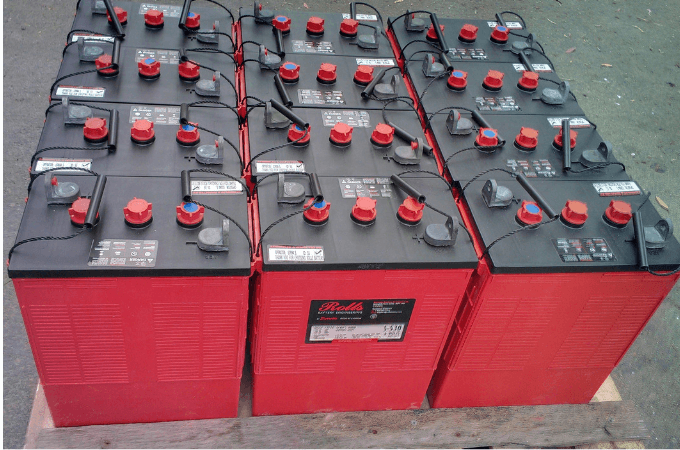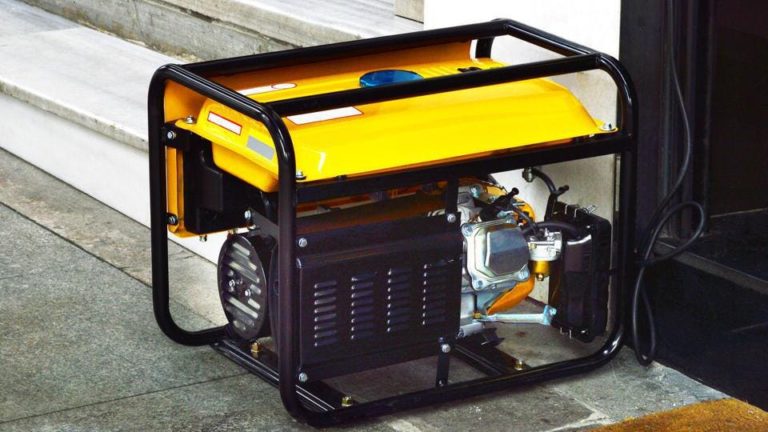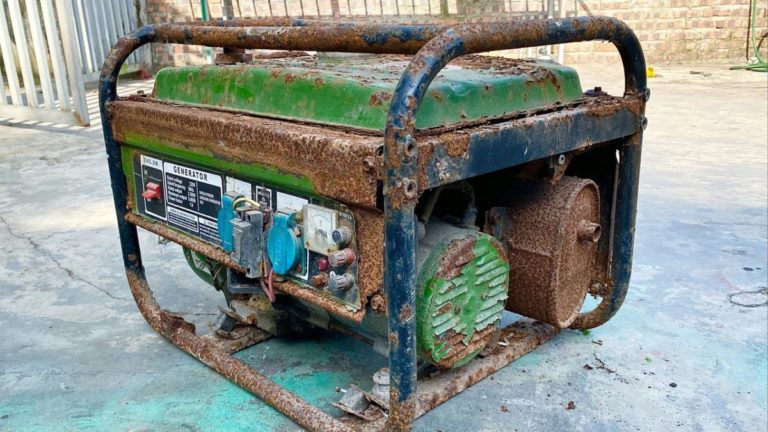Selecting the right battery for your off-grid inverter setup is a important decision that can make or break your renewable energy system.
With so many options available in the market, it’s important to consider factors such as battery type, capacity, depth of discharge, and lifespan before making a final choice.
Proper selection of batteries can ensure efficient energy storage, minimize maintenance needs, and extend the life of your off-grid system.
We will guide you through the process of selecting the right battery for your off-grid inverter setup.
Determine Your Energy Requirements
Before selecting a battery, it’s essential to determine your energy requirements. This includes the number of appliances you want to power, their energy consumption, and the duration you want to power them.
Start by calculating the total wattage of all the appliances you want to power, including lights, laptops, phones, and any other devices you want to keep running during a power outage.
This will give you an idea of the maximum amount of energy you need to store in your battery.
Next, consider the energy consumption of each appliance over time, as this will help you determine how long you want to power them with your battery.
For example, a light might consume 10 watts of energy for 5 hours, while a laptop might consume 50 watts of energy for 2 hours.
Based on these calculations, you can determine how long you want to power your appliances with your battery and choose a battery with sufficient capacity to meet your energy needs.
Consider the duration you want to power your appliances, as this will help you determine the minimum Ah capacity you need in your battery.
By calculating your energy requirements, you can select the right battery for your needs and ensure that you have enough power to last you through a power outage.
Choose the Right Battery Type
There are various types of batteries available, including lead-acid, lithium-ion, and flow batteries. Choose the right type based on your energy requirements, climate, and budget.
When it comes to selecting the right battery type for your energy storage needs, there are several factors to consider.
Lead-acid batteries are a popular choice for stationary energy storage due to their established manufacturing infrastructure and relatively low cost.
However, they have a lower energy density and shorter lifespan compared to other battery technologies.
Lithium-ion batteries, on the other hand, offer a higher energy density and longer lifespan, making them well-suited for applications with high energy demands and long discharge durations.
Flow batteries, which use a liquid electrolyte, offer scalability and long lifetimes, making them an attractive option for large-scale energy storage applications.
When choosing the right battery type, it’s essential to consider your energy requirements, climate, and budget.
Lead-acid batteries may be a cost-effective option for low-energy applications in mild climates, while lithium-ion batteries may be more suitable for high-energy applications in harsh environments.
Flow batteries offer a versatile solution that can be scaled up or down depending on your needs.
By taking into account these factors, you can select the battery type that best fits your specific requirements and budget.
Calculate Your Daily Energy Use
Calculate your daily energy use by multiplying the wattage of each appliance by the number of hours you want to power it. This will give you your total daily energy requirements.
Calculating your daily energy use is a important step in selecting the right solar panel system for your home.
To do this, you’ll need to multiply the wattage of each appliance by the number of hours you want to power it.
For example, if you have a 1000 watt refrigerator that you want to power for 24 hours a day, your daily energy requirement would be 1000 watts x 24 hours = 24,000 watt-hours (Wh).
Now, this number might seem daunting, but don’t worry, it’s not as complex as it sounds.
To make it more manageable, you can break down your energy usage into different categories.
Start by identifying the appliances that consume the most energy, such as your refrigerator, air conditioning unit, and electric water heater.
Once you have a list of your high-energy appliances, you can calculate their individual energy requirements.
Let’s use the example of a refrigerator again.
If you have a 1000 watt refrigerator and you want to power it for 24 hours a day, your daily energy requirement would be 1000 watts x 24 hours = 24,000 Wh.
Now, if you have a separate freezer that consumes an additional 500 watts for 18 hours a day, your daily energy requirement for that appliance would be 500 watts x 18 hours = 9,000 Wh.
By adding up the energy requirements of all your appliances, you’ll get a total daily energy requirement that will help you determine the right size solar panel system for your home.
Remember, the energy requirements of your appliances will vary depending on your specific needs and usage patterns.
Therefore, it’s important to calculate your daily energy use accurately, so you can determine the right size solar panel system for your home.
Calculating your daily energy use is a important step in determining the right size solar panel system for your home.
To calculate your daily energy use, you need to multiply the wattage of each appliance by the number of hours you want to power it.
For example, if you have a 1000 watt refrigerator and you want to power it for 24 hours a day, your daily energy requirement would be 1000 watts x 24 hours = 24,000 Wh.
In addition to the refrigerator, you should also consider other appliances such as lighting, air conditioning, and electronic devices like TVs and computers.
The energy requirements of these appliances will vary depending on your specific needs and usage patterns.
For instance, if you use a 500 watt air conditioner for 4 hours a day, your daily energy requirement would be 500 watts x 4 hours = 2000 Wh.
Accurately calculating your daily energy use is essential to determine the right size solar panel system for your home.
By doing so, you can ensure that your solar panel system can meet your energy needs and help you save money on your energy bills while reducing your carbon footprint.
To accurately calculate your daily energy use, start by identifying all the appliances and electronics in your home that use energy.
This includes lighting, air conditioning, refrigeration, and electronic devices like TVs and computers.
Next, determine the wattage of each appliance and multipy it by the number of hours you want to power it.
For example, if you use a 500 watt air conditioner for 4 hours a day, your daily energy requirement would be 500 watts x 4 hours = 2000 Wh.
This calculation will give you a clear idea of your energy needs, allowing you to choose the right size solar panel system for your home.
Remember to also consider other appliances and electronic devices that may be using energy in your home.
By accurately calculating your daily energy use, you can ensure that your solar panel system can meet your energy needs and help you save money on your energy bills while reducing your carbon footprint.
Here’s how to calculate your daily energy use, so you can make a well-informed decision when selecting a solar panel system for your home.
The process is quite simple, but it is important to get it right so that you can enjoy the full benefits of your investment.
To start, you must identify all the appliances and electronics in your home that use energy.
Lighting, air conditioning, refrigeration, and electronic devices such as TVs and computers all fall into this category.
Once you have identified these items, you will need to determine their wattage.
This information is usually available on the appliance itself, or in the owner’s manual if you cannot find it on the appliance itself.
It may also be available on the manufacturer’s website.
Once you have the wattage information, multiply it by the number of hours you want to power the appliance per day.
For example, if you have a 100-watt light bulb that you want to power for eight hours per day, you would multiply 100 watts by eight hours to get 800 watt-hours (Wh) of energy usage per day.
Add up the watt-hours for all of the appliances and electronics in your home to determine your total daily energy usage.
This number will give you a baseline for selecting the appropriate size solar panel system for your home.
Remember, it is better to err on the side of caution and overestimate your energy usage rather than underestimate it.
This will ensure that you select a system that can meet all of your energy needs and provide the best possible results.
Calculating your daily energy use is a important step in choosing the right solar panel system for your home, and with a little bit of research and some basic math, you can be well on your way to a sustainable and energy-independent lifestyle.]
To calculate your daily energy use, you will need to determine the wattage of each appliance and electronics in your home, and then multiply that wattage by the number of hours you want to power the item per day.
For example, if you have a 100-watt light bulb that you want to power for eight hours per day, you would multiply 100 watts by eight hours to get 800 watt-hours (Wh) of energy usage per day.
To calculate your total daily energy usage, add up the watt-hours for all of the appliances and electronics in your home.
This number will give you a baseline for selecting the appropriate size solar panel system for your home.
It is better to err on the side of caution and calculate your energy usage more accurately, rather than relying on rough estimates.
By taking a more detailed approach to calculate your daily energy use, you can ensure that your solar panel system is properly sized to meet your needs and help you achieve a sustainable and energy-independent lifestyle.]
Select the Right Battery Capacity
Based on your daily energy requirements, select a battery with the right capacity. A general rule of thumb is to choose a battery with a capacity that can provide at least 20 hours of backup power.
Choosing the right battery capacity is a important decision when selecting a portable power bank for your energy requirements.
To ensure you have enough backup power, it’s important to calculate your daily energy needs and then select a battery with a capacity that can meet or exceed those needs.
A general rule of thumb is to look for a battery with a capacity of at least 20 hours of backup power.
This means that if you use your device for an average of 2 hours per day, you should look for a battery with a capacity of at least 10000mAh (10 Ah).
However, this minimum requirement may vary depending on your specific energy needs and the type of devices you need to power.
It’s also important to consider the battery’s discharge rate, which affects how long the battery will last on a single charge.
A lower discharge rate means the battery will last longer, so look for a power bank with a high discharge rate if you need more backup power.
By calculating your daily energy needs and looking for a battery with at least 20 hours of backup power, you can find a power bank that meets your needs and keeps you connected on the go.
Consider the Battery’s Depth of Discharge
The depth of discharge (DOD) refers to the percentage of the battery’s capacity that you use before recharging. A higher DOD means longer battery life, so aim for a DOD of 50% or less.
When it comes to extending the life of your lithium-ion battery, it’s essential to consider the depth of discharge (DOD).
The DOD refers to the percentage of the battery’s capacity that you use before recharging.
In other words, if you drain your battery to 100% capacity and then recharge it, you’ll have reached a DOD of 100%.
However, if you only use 50% of the battery’s capacity before recharging, your DOD will be 50%.
The key is to aim for a DOD of 50% or less, as this will help prolong the life of your battery.
To achieve a lower DOD, it’s important to keep an eye on your battery’s state of charge (SOC) and avoid fully discharging it whenever possible.
This means charging your battery as soon as it drops below 50% SOC.
By doing so, you’ll help prevent the battery from reaching the end of its cycle life, which can reduce its overall lifespan.
Try to avoid charging your battery to 100% capacity too frequently, as this can also shorten its lifespan.
By being mindful of your battery’s DOD, you can help extend its life and ensure that it continues to perform at its best.
Evaluate the Battery’s Cycle Life
Cycle life refers to the number of charge and discharge cycles a battery can withstand before losing its capacity. Choose a battery with a high cycle life for longer usage.
When selecting a battery for your device, it’s important to evaluate its cycle life to ensure extended usage.
Cycle life refers to the number of charge and discharge cycles a battery can withstand before losing its capacity.
A high cycle life battery can last longer and provide consistent performance, even with frequent charge and discharge cycles.
Look for batteries with a minimum cycle life of 300-500 cycles, which indicates that the battery can be charged and discharged 300-500 times before losing its capacity.
High-quality batteries can offer up to 1000 cycles or more, ensuring long-term reliability and consistent performance.
Moreover, check for the charge and discharge cycle duration, as longer cycle times can affect the battery’s lifespan.
Optimize the battery’s usage and storage conditions to maximize its cycle life, such as avoiding deep discharges, maintaining proper storage temperatures, and charging the battery according to its specifications.
Investing in a battery with a high cycle life ensures a long-lasting and reliable power source, reducing the need for frequent replacements and minimizing downtime.
Choose a battery with a cycle life that matches your usage requirements to ensure optimal performance and prolong the lifespan of your device.
Look at the Battery’s Maintenance Requirements
Some batteries require more maintenance than others. Consider the battery’s maintenance requirements before making a purchase.
When selecting a battery for your needs, it is important to consider the maintenance requirements of the battery.
Some batteries require more maintenance than others, which can impact the overall performance and lifespan of the battery.
For example, some batteries may require regular cleaning or check-ups to ensure proper functioning, while others may have specific charging and discharging requirements.
Some batteries may have specific storage requirements to prevent damage or degradation.
Therefore, it is essential to research the maintenance requirements of the battery before making a purchase to ensure that you are able to provide the necessary care and attention to the battery.
By doing so, you can maximize the performance and lifespan of the battery, and ensure that it meets your needs.
Check the Battery’s Warranty
Make sure to check the warranty offered by the manufacturer. A longer warranty can provide peace of mind and protect your investment.
When purchasing a new battery, it is important to check the warranty offered by the manufacturer.
A longer warranty can provide peace of mind and protect your investment.
Look for a warranty that covers at least one year of use and includes comprehensive coverage for defects in materials and workmanship.
Ensure that the warranty offers clear and concise terms and conditions, as well as a convenient and hassle-free claims process.
By choosing a battery with a longer warranty, you can have confidence in your purchase and enjoy a longer lifespan for your battery.
Don’t hesitate to ask questions or seek clarification on any aspect of the warranty before making your purchase.
With a comprehensive warranty, you can enjoy a worry-free and efficient battery life.
Want More? Dive Deeper Here!
Hey there! If you’re the type who loves going down the rabbit hole of information (like we do), you’re in the right spot. We’ve pulled together some cool reads and resources that dive a bit deeper into the stuff we chat about on our site. Whether you’re just killing time or super into the topic, these picks might just be what you’re looking for. Happy reading!






